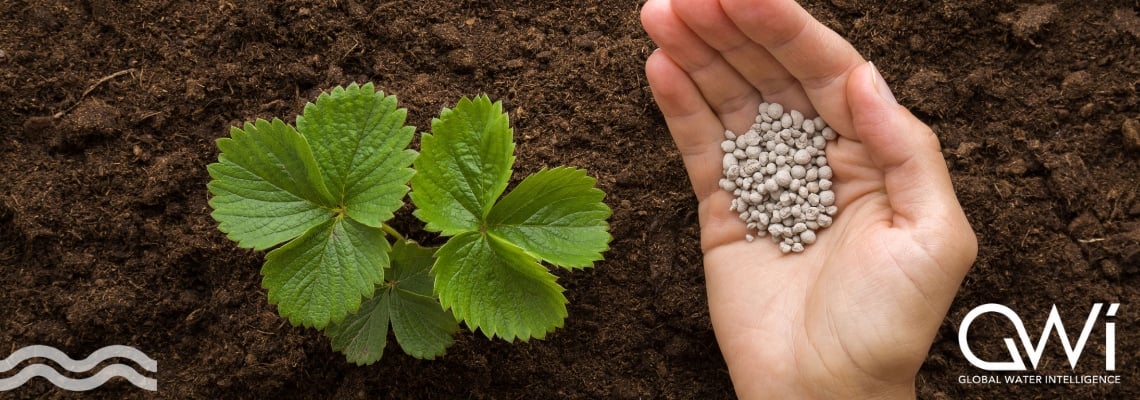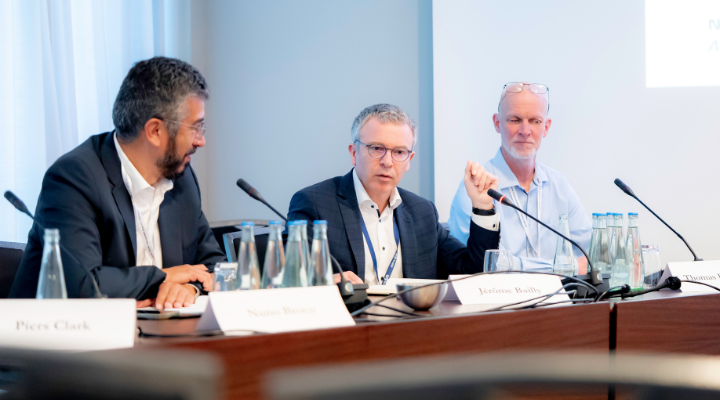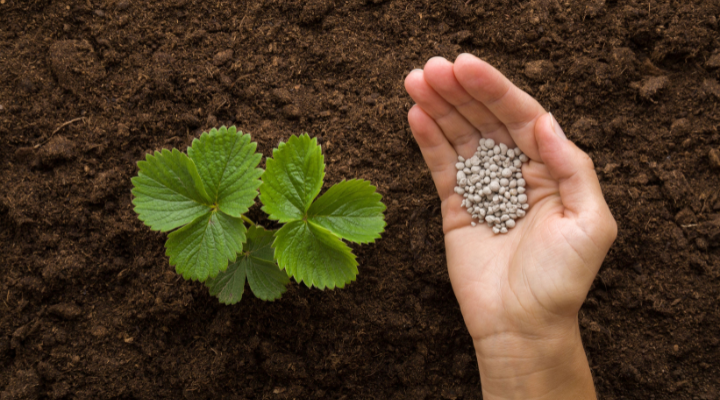 Knowledge partner GWI
Knowledge partner GWI
Sanergy – Kenya – TRL 9
Sanergy employs a systems approach with daily waste collection and transportation to a treatment facility where it is turned into organic fertiliser. A urine-diverting design separates the solid and liquid waste into cartridges. Black soldier fly larvae are used to digest the sludge and produce a recoverable protein source for agriculture.
Sanivation – Kenya – TRL 9
Sanivation offers locally fabricated container-based urine-diversion toilets to eliminate the risk of contaminating the local environment. The bi-weekly collection of faecal sludge facilitates its treatment and transformation into an income-generating, sustainable solid fuel.
Aquacycl – United States – TRL 9
Aquacycl’s BioElectrochemical Treatment Technology (BETT) is based on a modular microbial fuel cell and is designed for BOD removal in wastewater. It utilises naturally occurring bacteria in wastewater in a fixed-film to remove COD and produce electricity. In addition to using this recovered energy directly to self-power the unit, BETT can eliminate up to 80 per cent of primary sludge and produce irrigation-quality water.
Suez Biofactory – France – TRL 9
Suez’s Biofactory wastewater treatment plant employs thermal drying and gasification of sludge to produce resources within an energy self-sufficient process. In addition to energy recovery in the form of biogas, the treated biosolids can also be utilised as a fertiliser for agriculture.
WASE – United Kingdom – TRL 7
The industrWASE Biocentre combines biological and electrochemical treatment processes to convert wastewater and organic waste into energy-rich biogas. Offering a 70 per cent smaller footprint than conventional anaerobic digestion, it can increase energy recovery while reducing sludge production.
 Source: John Deputy/GWI
Source: John Deputy/GWI
Epic Cleantec – United States – TRL 9
Epic Cleantec offers a decentralised water treatment system, designed to recycle up to 95 per cent of a building’s black or greywater onsite for non-potable applications. The recovered energy can be used to preheat a domestic hot water supply while biosolids can be repurposed as soil amendments for landscaping projects.
Hydraloop – Netherlands – TRL 9
Hydraloop’s system combines six technologies to collect, treat and recycle greywater for non-potable applications such as toilet flushing, washing machines, garden irrigation and topping up swimming pools. It is IoT connected and requires a low energy consumption.
Sidestroem – Singapore – TRL 6
Sidestroem offers a nanofiltration-type forward osmosis system for the recovery of water and sodium chloride from industrial wastewater. It has lower energy requirements and reduced pretreatment needs in comparison to reverse osmosis, and is suitable for use in industries which rely heavily on salt such as textile dyeing and tanneries.
Genifuel Corporation – United States – TRL 7
Genifuel converts wet waste into renewable oil and gas in hours via hydrothermal processing. It works with almost any organic feedstock and can produce bio-crude oil, natural gas, or both together.
Capricorn Power – Australia – TRL 8
Capricorn Energy’s Barton Engine converts heat to sustainable electricity with no water or chemicals, producing zero-emission energy. It uses modest temperatures and pressures of 350 - 800°C and <20 bar.
GreenHeat – France – TRL 9
GreenHeat’s Heat-as-a-Service model sells heat recovered from wastewater at a fixed price. Its Obox system can capture 50 per cent of the low-grade heat from incoming wastewater and use a heat exchanger to transfer it to the cold water feeding a client’s hot water production system.
InPipe Energy – United States – TRL 9
InPipe Energy’s In-PRV solution recovers and converts differential pressure in water pipelines into renewable energy. It is the first pressure-recovery valve designed to be co-located with existing control valves, and its controls are easily integrated into existing and new pressure management systems.
REA – United States – TRL 9
REA diverts and captures fats, oils and grease (FOG) in a collection system to produce biodiesel. In addition to improving line blockages, it can extract value from FOG waste to provide a potential source of revenue.
Royal HaskoningDHV’s Kaumera Nereda gum – Netherlands – TRL 7
Kaumera gum is a by-product extracted from the Nereda granular sludge process, reducing sludge treatment and disposal costs. The biopolymer has many promising applications, for example as a coating agent, biostimulant, binding agent and flame retardant.
Bluemethane – United Kingdom – TRL 5
Bluemethane captures methane from water, turning a wasted resource and potent greenhouse gas into a new source of energy. The modular design and closed system with >80 per cent methane removal efficiency is designed for reservoirs, water treatment and rice cultivation applications dealing with significant methane emissions.
Algaementum – Portugal – TRL 7
Algaementum’s onsite, decentralised algal treatment units can treat 40m3/week and remove up to 80 per cent of nutrients. The microalgae from agri-wastewater treatment are used as a soil amendment or biofertiliser, increasing the soil organic carbon and reducing water needs.
Royal HaskoningDHV’s HUMVI – Netherlands – TRL 9
Using HUMVI technology, humic acid can be recovered from drinking water and retailed as a valuable biostimulant product. These naturally occurring humic acids in raw water are removed when ion exchange is employed for colour removal.
CHAP – United Kingdom – TRL 6
CHAP’s NTPlus project used Agua DB’s ion exchange resins to remove nitrate from groundwater and convert it into liquid fertiliser. It has the potential to reduce the agricultural sector’s reliance on traditional, carbon-intensive methods of fertiliser production.
 Source: Shutterstock
Source: Shutterstock
Four-E Systems – Germany – TRL 8
Four-E Systems’ Electrochemical Triggering Technology (ECT) uses electromagnetic waves to produce multi-layered physical and chemical effects in a targeted manner. It can be integrated into a wastewater treatment plant for applications including methane recovery, sludge dewatering and selective contaminant removal.
Mop Tech Industries – South Africa – TRL 6
Mop Tech Industries’ Floc-Opex Recovery (FOR) solution is designed for the selective recovery of metals from wastewater and sludge based on a Donnan Dialysis (DD) cation exchange membrane. Targeting aluminium recovery from sludge, it claims to reach up to 90 per cent recovery.
Chromafora – Sweden – TRL 7
Chromafora offers a purification technology and patented methods to remove metals and PFAS from polluted water, and to extract valuable metals for recycling. The used chemicals are recyclable and the additives are biological and decomposable.
XtraLit – Israel – TRL 6
XtraLit offers a patented technology for direct lithium extraction from low and medium concentration brines. Its highly selective lithium ion-sieve sorbent and ion-exchange technology claims to reach up to 95 per cent lithium recovery rates.
Captive Systems – Italy – TRL 8
Captive Systems’ MagnetoSponges have magnetic properties and a tuneable outer coating designed for semi-selective wastewater and gas treatment. Across anionic, cationic and organic product variations, it can remove substances including nickel, copper, phosphate and emulsifiers.
Bioferric Ink – Spain – TRL 6
Bioferric Ink recovers and recycles metallic compounds in complex media using magnetic microparticles. It is adaptable to the needs of biochemical and chemical-physical processes for treating compounds in industrial wastewater.
Organics – United Kingdom – TRL 9
The Organics Thermal Ammonia Stripper & Recovery System (OTASR) removes ammonia from process and wastewater to be recovered as ammonium hydroxide or anhydrous ammonia. The process does not produce sludge and does not require the addition of chemicals for pH adjustment, or an additional carbon source.
Current Water Technologies – Canada – TRL 7
Current Water Technologies offers the AmmeEL-H2 electrochemical oxidation process for ammonia removal from wastewater. It simultaneously generates hydrogen gas, and an ion exchange medium minimises adsorption of calcium, magnesium and strontium.
METzero – United Kingdom – TRL 7
METzero offers a retrofittable electrode-based wastewater treatment solution to recover hydrogen and ammonia. Potential applications include use within industrial wastewater treatment and municipal treatment, especially remote sites or those with capacity issues.
Renewable Nutrients – United States – TRL 7
Renewable Nutrients’ Quick Wash system is designed for the extraction and recovery of phosphorus from biosolids and liquid streams. It can be applied in the sludge stream pre-anaerobic digestion, pre-dewatering, or post-dewatering, with a combined application of both nitrogen and phosphorus extraction for high-strength streams.
EasyMining – Germany – TRL 7
The Ash2Phos process extracts phosphorus, along with other commodities such as iron and aluminum, from the ash of sewage sludge after incineration. The recovered calcium phosphate is purer than the comparable commodities sourced from raw materials and is easy to integrate into existing value chains.
Suez’s Phosphogreen – France – TRL 9
Phosphogreen is a phosphorus recovery process based on a precipitation-crystallisation reaction. The injection of magnesium chloride obtains crystallised struvite, which can be used as an agricultural fertiliser.
This article has been produced by our knowledge partner, GWI.